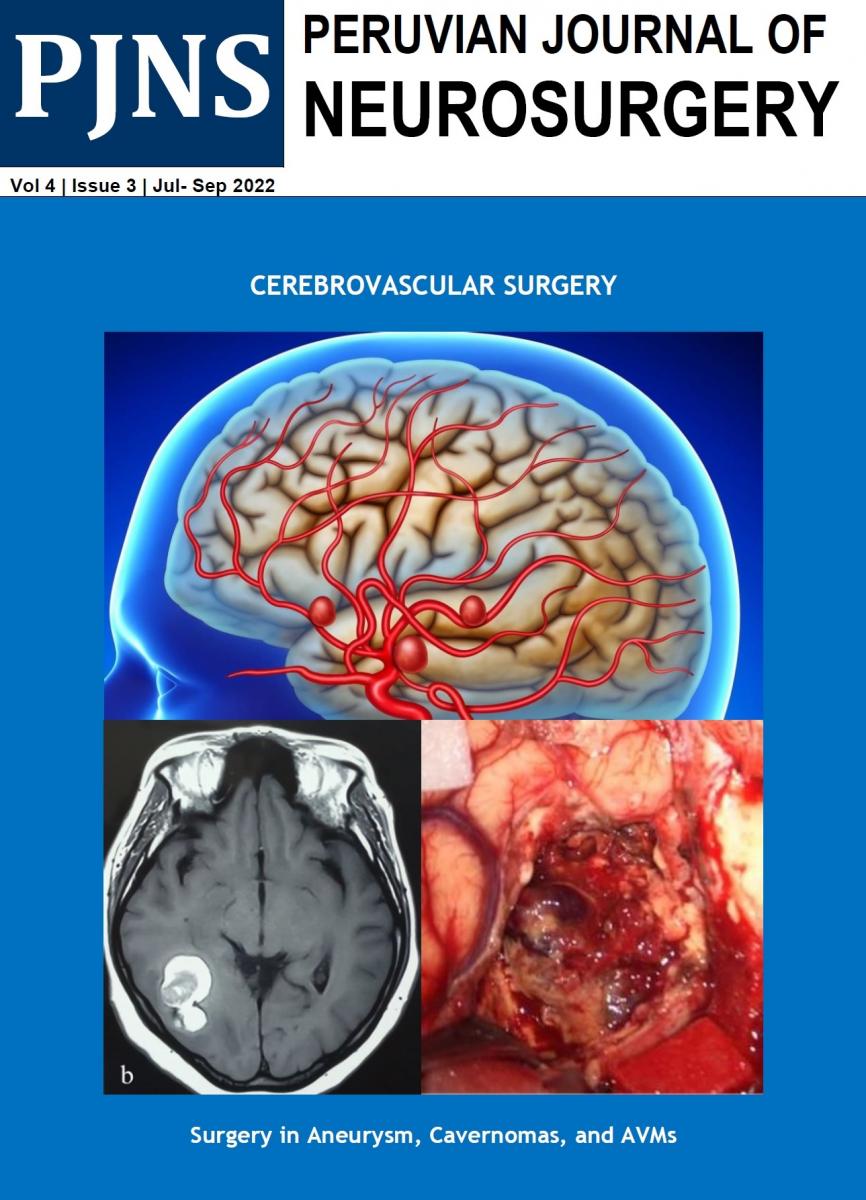CRISTIAN SALAZAR C., ALLEN DIAZ I., RICARDO ROJAS D., MIGUEL GAITAN C., ARMANDO LUCAR F.
Tipo:
Case Report
ABSTRACT (English):
Introduction: True fetal or fetal type posterior communicating artery aneurysms (PComA) are a technical challenge for the neurosurgeon in both endovascular and microsurgical treatment. Microsurgical clipping using minimally invasive approaches is a safe and optimal alternative solution.
Clinical case: a 53-year-old patient who presented subarachnoid hemorrhage, Hunt & Hess scale III, Fisher scale III, and Glasgow Coma Scale of 13. Cerebral angioCT showed two saccular aneurysms in the right true fetal PComA. The patient underwent a right interfacial minipterional craniotomy and clipping of the 2 aneurysms, using sodium fluorescein as a guide. Total occlusion of the aneurysms was achieved, maintaining the patency of the fetal PComA.
Conclusion: The minipterional approach allows adequate access to the fetal PComA and the aneurysms originating from it. It is essential to review the patency of the adjacent vessels, being the use of intraoperative fluorescein is an essential complement to avoid complications such as cerebral infarction.
Keywords: Intracranial Aneurysm, Craniotomy, Fluorescein, Subarachnoid Hemorrhage, Neurosurgeons (Source: MeSH NLM)
ABSTRACT (Spanish):
Introducción: Los aneurismas de la arteria comunicante posterior (AcomP) fetal verdadera o tipo fetal son un desafío técnico para el neurocirujano tanto en el tratamiento endovascular como en el microquirúrgico. El clipaje microquirúrgico mediante abordajes mínimamente invasivos es una alternativa de solución segura y óptima.
Caso clínico: Paciente de 53 años que presentó una hemorragia subaracnoidea, escala de Hunt & Hess grado III, escala de Fisher III y escala de Glasgow de 13. La angioTEM cerebral mostró dos aneurismas saculares en la AcomP fetal verdadera derecha. La paciente fue sometida a una craneotomía minipterional interfacial derecha y clipaje de los 2 aneurismas, utilizando como guía, fluoresceína sódica. Se logró la oclusión total de los aneurismas, manteniendo la permeabilidad de la AcomP fetal.
Conclusión: El abordaje minipterional permite un acceso adecuado a la AcomP fetal y a los aneurismas originados en ella. Es esencial la revisión de la permeabilidad de los vasos adyacentes, siendo el uso de fluoresceína intraoperatoria un complemento esencial para evitar complicaciones como el infarto cerebral.
Palabras Clave: Aneurisma Intracraneal, Craneotomía, Fluoresceína, Hemorragia Subaracnoidea, Neurocirujanos (Fuente: DeCS Bireme)


